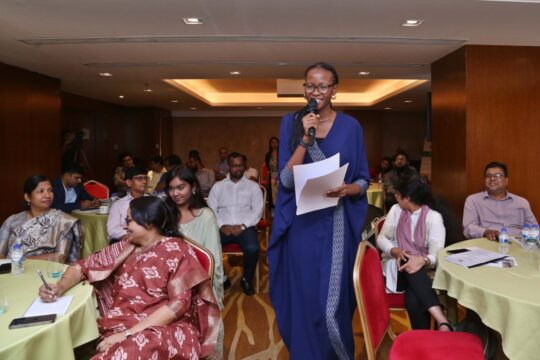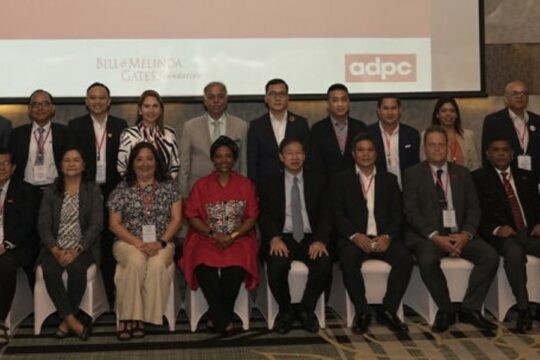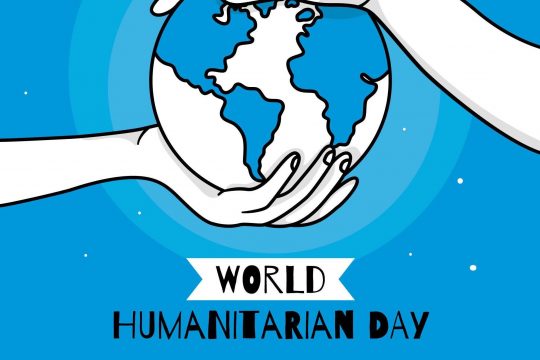The Asian Preparedness Partnership secretariat at ADPC and the Preparedness Partnership of Cambodia organized a two-day reflection workshop from 22-23 April, 2025 at National Committee for Disaster Management Conference Room, Phnom Penh, Cambodia. The technical team of the APP secretariat of ADPC and the representatives from the PPC members
- National Committee for Disaster Management (NCDM)
- Federation of Association of Small and Medium Enterprises in Cambodia (FASMEC)
- Partnership for Development in Kampuchea (PADEK)
- Cambodia Humanitarian Forum (CHF)
participated in the workshop to reflect, deliberate and enhance the effective implementation of activities under the Asian Disaster Readiness Fund (Pillar 1) and National Preparedness Partnership (Pillar 2).
The objectives of the workshop were:
- Assess the progress and key challenges faced by the PPC in consolidating and sustaining the partnership.
- Strengthen the PPC’s coordination structure by clearly defining the roles and responsibilities of its members, and establish a shared vision, mission, and objectives for its long-term sustainability.
- Evaluate the progress of locally led initiatives and clearly articulate the PPC’s localization model.
The pedagogy of the workshop provided the platform for the participants to position and align themselves with the vision of the program to achieve the desired outcomes.
Activities in a frame

Key highlights:
Assessing the progress
- The CHF and FASMEC is progressing to re-formalize their memberships.
- The review of the sub-decree on the Commune Disaster Management Committee (CDMC) composition, undertaken by the target communes and facilitated by the PPC, led to the inclusion of private sector and NGO representatives in the CDMC.
- This reform has the potential to influence provincial and district disaster management committees in the target subnational levels, which have already expressed interest in adopting similar changes within their own structures.
- In addition, the inclusion of the private sector in the CDMC facilitates information sharing—specifically, what local businesses are available and where they are located. This enhanced coordination will enable local NGOs to procure and deliver response supplies directly from nearby businesses, rather than relying on sources in Phnom Penh. As a result, response times and costs will be significantly reduced, allowing for quicker and more effective life-saving interventions.
Revisiting and Updating the Terms of Reference
The challenges regarding coordination structure and roles and responsibilities of the PPC members were identified and addressed in the workshop by revisiting and updating the PPC’s TOR.
Key points from the TOR:
- Overall and specific shared roles and responsibilities of the members of the PPC were revised to fulfil the mission of PPC.
- Operational roles and responsibilities of PPC grantee / sub grantee and non-grantee / non-Sub-Grantee members were demarcated and mentioned in the TOR.
- The specific roles, responsibilities and modes of operation of the PPC steering committee were revised to improve the guidance and support for the functioning of PPC.
- Being the central coordinating node, the roles and responsibilities of the PPC secretariat were revised and specified to ensure the effective functioning of the PPC and its steering committee.
Drafting a PPC Strategic Action Plan
The event provided an impetus to develop a strategic action plan. PPC members identified activities from the National Action Plan for Disaster Risk Reduction that align with their roles and responsibilities in promoting the localization of DRRM and climate resilience. These selected activities, organized under the strategic priority areas of the national plan, will directly contribute to advancing its overarching goals. To complete the process, the PPC has been tasked with identifying key actions under each selected activity within the strategic priority areas, along with developing a 3–5 year implementation timeline.
Identifying PPC’s Localization model
With active participation of members, a working definition of localization was drafted “Strengthening provincial, district, commune & village-level stakeholders in DRR and climate adaptation toward self-reliance, ownership, and resilience.”
PPC members shared what they are doing to strengthen the provincial, district, commune, and village-level stakeholders in implementing the ADRF supported locally led initiatives. This gave form to their localization model in implementing locally led initiatives under the Asian Disaster Readiness Fund (ADRF).
The PPC localization model highlights the direct engagement between the PPC and the commune, with the provincial and district levels primarily serving as intermediaries that endorse PPC activities at the commune level. Unlike the typical top-down approach, this arrangement allows the commune to shape the content of outputs through its collaboration with the PPC. In turn, these locally driven outputs have the potential to influence provincial and district policies, creating opportunities to scale up commune-level successes to higher levels of governance. Further review to enhance the model will be undertaken by the PPC.
To support the sustainability of the model the members identified financing mechanisms that could be leveraged to support DRR and climate actions at the local level. NCDM expressed its support for joint proposal development with PPC partners to strengthen resource mobilization efforts.
Conclusion
The reflection provided a platform for all the PPC members to deliberate over the progress and identify the challenges in implementing the APP activities. It led to successfully updating the PPC Terms of Reference and articulating the PPC’s localization model. Further, the workshop clarified and further assisted in developing an initial strategic action plan as well as sustainability strategies, including long-term budget planning and resource mobilization approaches to support PPC’s continued implementation and coordination.


